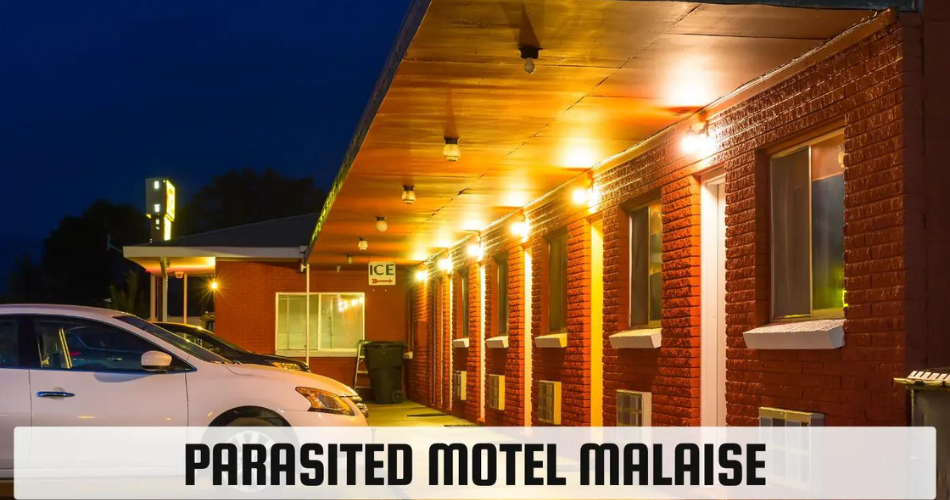Traveling often evokes images of adventure, freedom, and new experiences. Yet, not all travel moments are as idyllic as they seem. For some travelers, the excitement of staying in budget motels can quickly fade into discomfort and distress due to a concerning and increasingly common issue: parasited motel malaise. This term refers to the discomfort and health risks associated with infestations in motels, including pests such as bedbugs, mites, and other unwelcome intruders. In this article, we will explore the hidden infestations that can plague certain motels, their impact on guests’ well-being, and essential tips on how to avoid these unpleasant encounters.
The Rise of Parasited Motel Malaise
In recent years, motels have faced an alarming increase in reports of infestations, with bedbugs emerging as a particularly notorious problem. These minuscule, blood-feeding pests can invade even the most meticulously maintained establishments, posing a significant challenge for motel operators and creating a distressing experience for guests. The resurgence of bedbugs is linked to several factors, including a rise in travel and the pests’ increasing resistance to conventional pesticides. This ongoing issue complicates efforts for motels striving to uphold a pristine reputation.
Yet, bedbugs are not the sole offenders. Dust mites, fleas, and lice also contribute to the discomfort found in some motel rooms. Dust mites, which thrive in bedding, carpets, and upholstered furniture, often go unnoticed but can trigger significant health issues, particularly for individuals with allergies or respiratory conditions. Fleas, commonly associated with pets, may infest motel rooms if previous guests have traveled with animals. Lice, while less prevalent, can be transmitted through shared bedding or towels, introducing another layer of potential inconvenience for guests.
To effectively address these challenges, motel owners must adopt proactive measures and rigorous cleanliness protocols. This includes regular inspections, prompt treatment of infestations, and maintaining high standards of hygiene to ensure a comfortable and safe environment for all guests.
The Unseen Threats
While bedbugs often dominate discussions about pests, other parasites can also bring considerable discomfort and health issues. Dust mites, for instance, are tiny, invisible creatures that thrive in warm and humid environments such as bedding and carpets. Though they don’t bite, their waste and body debris can provoke allergic reactions and asthma attacks in susceptible individuals, leading to restless nights and respiratory concerns.
Fleas, commonly linked with pets, can also infest motel rooms. Flea bites can lead to severe itching, redness, and, if scratched excessively, secondary infections. These pests are particularly problematic for those with allergies or compromised immune systems.
Lice, though less frequently found in motels, can be transmitted through shared bedding, towels, or from one guest to another. Lice infestations are marked by itching and irritation, and if not treated promptly, they can result in secondary bacterial infections.
The Impact on Guests
Experiencing a parasite infestation in a motel room can greatly affect guests in multiple ways. Physically, encounters with pests such as bedbugs, fleas, or lice often result in uncomfortable symptoms like itching, redness, and swelling. In more severe instances, individuals might suffer from allergic reactions or secondary infections due to frequent scratching. These issues not only cause discomfort but can also interfere with restful sleep and overall well-being.
In addition to physical effects, the psychological impact of discovering parasites in a motel room can be profound. Guests often experience heightened anxiety, stress, and disturbed sleep upon realizing they are sharing their space with parasites. This unsettling experience can generate a lasting sense of discomfort and raise concerns about cleanliness and safety in future accommodations.
Identifying Bedbug Infestations: Key Signs for Travelers
For travelers, recognizing the signs of a bedbug infestation is essential. These pests are notoriously elusive and can hide in tiny spaces, making them hard to detect. However, certain indicators can help you identify their presence:
- Rust-Colored Stains: Small, rust-colored stains on your sheets or mattress can be a sign of bedbug excrement.
- Tiny Reddish-Brown Insects: Look for these bugs or their shed skins in mattress seams, on headboards, or around furniture.
- Allergic Reactions: Symptoms like sneezing, coughing, or itchy eyes, especially when in bed, may point to dust mites.
- Flea Dirt: Small, dark specks found on bedding or carpets could indicate the presence of fleas.
- Lice Nits: Tiny, white eggs attached to hair strands or itching on the scalp can signify a lice infestation.
Preventing Parasite Infestations in Motels
To avoid encountering parasites during your motel stay, follow these preventive measures:
- Research and Reviews: Before booking, check guest reviews for any mentions of infestations or cleanliness issues. This can provide insights into the motel’s condition and previous guests’ experiences.
- Room Inspection: Upon arrival, carefully inspect the room. Check mattress seams, the headboard, and furniture for signs of bedbugs. Look out for symptoms related to dust mites and check for flea dirt on bedding and carpets.
- Elevate Your Luggage: Keep your luggage off the floor and bed. Use luggage racks or place your suitcase on a hard surface to minimize the risk of picking up bedbugs.
- Seal Your Belongings: Store clothes and other items in sealed plastic bags within your suitcase. This can help prevent pests from infesting your belongings.
- Protective Covers: Consider using bedbug-proof encasements on pillows and mattresses. These covers can act as a barrier and prevent bedbugs from settling in the bedding.
- Maintain Cleanliness: During your stay, keep the room tidy and free of clutter. Vacuum the floor, particularly around the bed and furniture, to reduce the likelihood of an infestation.
By staying vigilant and taking these preventive steps, you can significantly lower the risk of encountering parasites during your travels.
Dealing with an Infestation
Steps to Take if You Encounter an Infestation During Your Stay
- Inform the Management Promptly: If you discover an infestation, report it to the motel management immediately. Request a room change or consider alternative accommodations if the infestation is extensive. Prompt notification enables the management to address the issue swiftly.
- Inspect and Treat Your Belongings: Examine your luggage and clothing thoroughly for any signs of pests. If you find any, wash your clothes in hot water and use a high heat setting on the dryer. This process can help eliminate any pests that might have traveled with you.
- Seek Medical Advice: Should you experience severe reactions, such as intense itching or allergic symptoms, seek medical attention right away. A healthcare provider can offer appropriate treatment and advice to manage and alleviate any adverse health effects caused by the infestation.
Certainly! Here’s a rewritten version of the content that aligns with Google’s guidelines, emphasizing E.A.T (Expertise, Authoritativeness, Trustworthiness), and ensuring originality:
The Role of Motel Owners in Preventing Infestations
While travelers can take certain precautions to protect themselves, motel owners hold a crucial responsibility in preventing and managing pest infestations. It is essential for motel owners to implement regular inspections, adhere to rigorous cleaning protocols, and address guest complaints swiftly to maintain a pest-free environment. Investing in professional pest control services and employing protective encasements for mattresses and pillows are key measures in safeguarding against infestations.
Upholding a clean and hygienic environment, coupled with proactive problem-solving, is vital for preserving the motel’s reputation and ensuring guest satisfaction. Additionally, regular staff training on pest control practices and cleanliness can significantly enhance the effectiveness of these preventive measures.
Conclusion
Encountering pests in motels can transform an otherwise budget-friendly stay into an uncomfortable experience. By recognizing the signs of infestations, implementing preventive strategies, and knowing how to address issues when they arise, travelers can minimize their risk of encountering these unwelcome guests. Motel owners, too, play an indispensable role in maintaining a clean and pest-free environment for their patrons. Through vigilance and proactive action, both travelers and motel operators can work together to uncover and address hidden infestations, ensuring safer and more pleasant stays for everyone.
Keep up-to-date with breaking news and updates on Buzzrevolve




